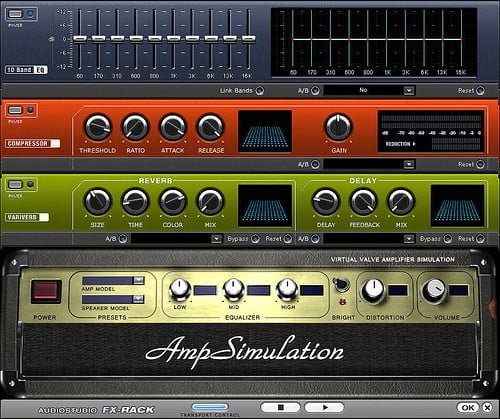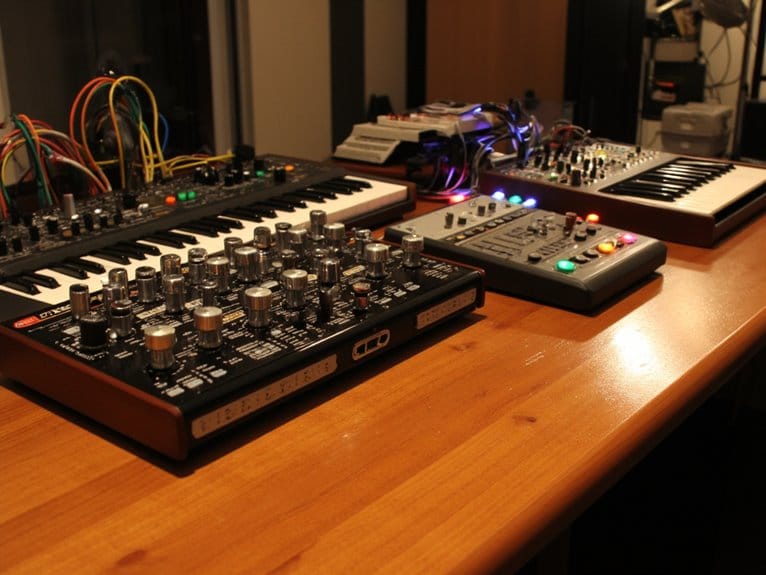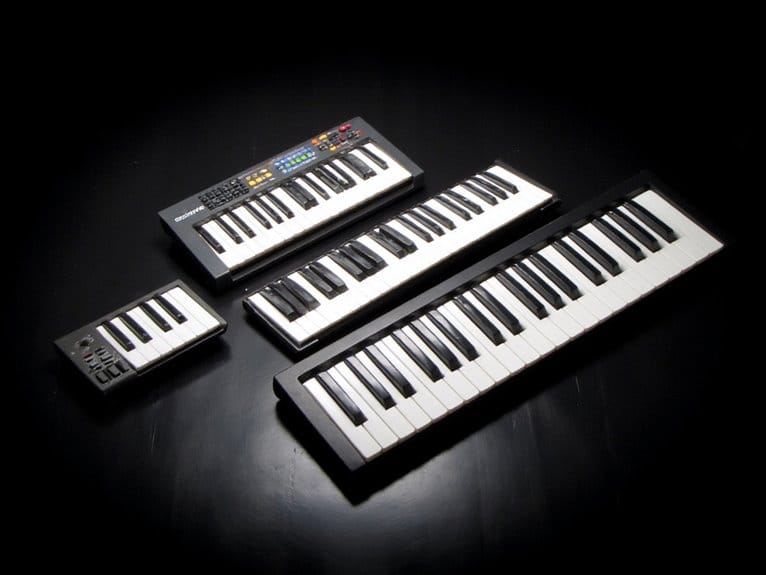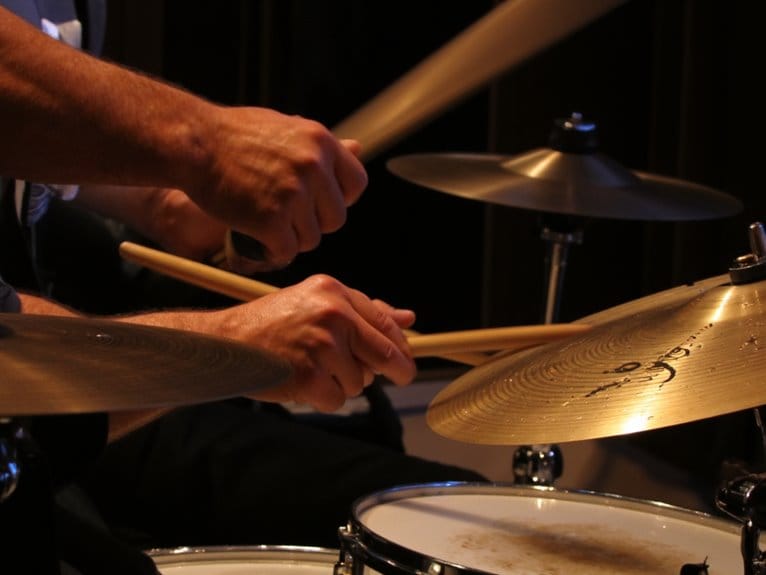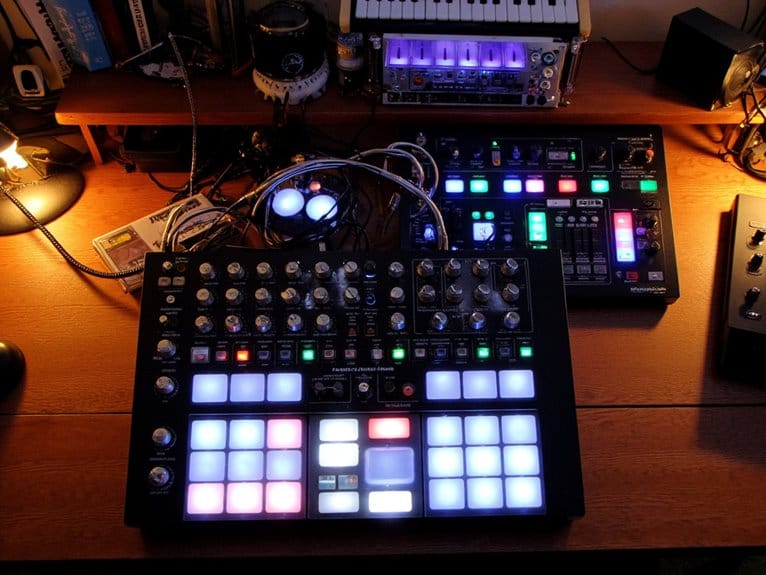Optimizing Workflow: Must-Have Features in a DAW
Optimizing workflow in a DAW involves careful track organization, color coding, track stacks, keyboard shortcuts, and time manipulation tools. By grouping tracks logically, assigning colors for visual clarity, collapsing tracks into stacks, and learning efficient shortcuts, productivity in music production is greatly enhanced. Understanding time manipulation tools for precise editing and arrangement further refines compositions. These essential features are vital for maximizing efficiency and creativity in DAW use.
We are supported by our audience. When you purchase through links on our site, we may earn an affiliate commission, at no extra cost for you. Learn more.
Track Organization and Grouping
When setting up a project in a DAW, the key to efficient workflow and project clarity lies in careful track organization and grouping. DAWs provide a variety of tools to aid in this process. Grouping tracks together based on similarities such as drums, vocals, or synths can greatly enhance project management. By utilizing features like track stacks, related tracks or sections can be bundled, streamlining organization and improving workflow efficiency.
Color-coding tracks within the DAW is another essential aspect of track organization. It enhances visual identification and grouping, making it easier to navigate through even the most complex projects. This visual clarity can help in quick recognition of different elements, leading to smoother editing processes.
Labeling tracks and regions is important for providing structure and clarity within the project. It allows for quick identification and arrangement of elements, ensuring that the workflow remains seamless. Additionally, segmenting the project timeline with markers further aids in dividing sections for better navigation and editing. This segmentation is especially helpful in larger projects where different parts need distinct delineation for easier handling. Overall, careful track organization, grouping, and utilizing the various features provided by DAWs are essential for maintaining a structured and efficient workflow.
Color-Coding for Visual Clarity
Color-coding in a DAW greatly enhances visual organization by allowing for quick identification of different tracks, regions, or elements within a project. When it comes to optimizing workflow and ensuring visual clarity in DAWs, customizing color-coding can be a game-changer. Here are some key points to contemplate:
- Efficient Organization: Assigning specific colors to tracks based on instrument type or function helps in organizing and browsing through complex projects efficiently. By visually categorizing elements like drums, vocals, synths, or effects with distinct colors, you can easily pinpoint and work on specific parts of your project.
- Clear Workflow: Different colors representing various elements not only aid in organization but also contribute to a clear and intuitive workflow. Visual cues provided by color-coding can speed up your decision-making process and enhance overall productivity during production.
- Consistent Visual Representation: Utilizing a consistent color scheme across projects enhances visual clarity and streamlines the production process. This consistency allows for better project management and ensures a smooth shift between different sessions.
- Customizable Options: DAWs like Pro Tools, Logic Pro, and Ableton Live offer customizable color-coding options, providing flexibility to tailor the visual organization to individual preferences. This feature empowers users to create personalized workflows that suit their specific needs and working styles.
Track Stacks and Labeling
Track organization is an important aspect of efficient workflow in a digital audio workstation (DAW), and utilizing track stacks and labeling can greatly enhance project management and navigation. In DAWs, track stacks allow users to group related tracks together, making it easier to manage and organize them effectively. By grouping tracks, users can reduce clutter and improve workflow efficiency by collapsing multiple tracks into a single stack. This feature not only saves space but also allows for a more streamlined view of the project.
One of the key benefits of track stacks is the ability to easily expand or collapse them, providing access to individual tracks or sections as needed. This functionality enhances the overall production process by simplifying the navigation within complex projects. Additionally, labeling tracks within these stacks is essential for clear identification and quick access. When arranging, editing, or mixing tracks, track stacks play a crucial role in facilitating these tasks. They enable users to work on multiple tracks simultaneously, leading to a more efficient and productive workflow. To sum up, incorporating track stacks and proper labeling techniques in a DAW improves the organization and management of projects, ultimately enhancing the creative process.
Efficient Keyboard Shortcuts
To optimize workflow efficiency in a digital audio workstation (DAW), mastering efficient keyboard shortcuts is paramount for enhancing productivity and streamlining tasks. Customizable keyboard shortcuts play a vital role in tailoring your DAW experience to suit your specific needs. Here are some key points to keep in mind when delving into the world of efficient keyboard shortcuts:
- Reduce Manual Clicks: Keyboard shortcuts can greatly speed up your workflow by minimizing the need for manual mouse clicks. This streamlines the process and allows for a more fluid work experience.
- Save Time: Learning and implementing keyboard shortcuts can save you valuable time during music production. By quickly executing commands like cut, copy, paste, zoom in/out, play, stop, and record, you can focus more on the creative aspects of your work.
- Enhance Efficiency: Mastering keyboard shortcuts not only speeds up tasks but also enhances your overall efficiency. With practice, these shortcuts become second nature, allowing you to work seamlessly and efficiently within your DAW.
- Improve User Experience: Utilizing keyboard shortcuts can greatly improve your user experience within the DAW. By customizing shortcuts to align with your workflow, you create a more personalized and productive environment for music production.
Utilizing Time Manipulation Tools
Using time manipulation tools within a DAW enhances precision and flexibility in editing tasks, allowing for smooth adjustments to the timing and structure of musical compositions. These tools offer a variety of functionalities such as removing, copying, and adding time, which are essential for achieving a polished sound. By setting markers and efficiently moving between sections, musicians can streamline the arrangement process, ensuring a seamless workflow.
Furthermore, the availability of sectional tools like divide, repeat, slice, and add further simplifies the editing and arrangement of musical elements. These tools enable users to make detailed adjustments to the timing of individual sections, contributing to a cohesive and well-organized track. Understanding and utilizing these time manipulation tools not only saves time but also enhances the overall quality of the music production process.
Incorporating these features into one’s workflow empowers creators to fine-tune every aspect of their compositions with ease. Whether it’s aligning beats, adjusting changes, or refining the tempo, mastering time manipulation tools is key to achieving a professional and dynamic sound. Ultimately, using these tools effectively can elevate the creative output and efficiency of music production within a DAW.

